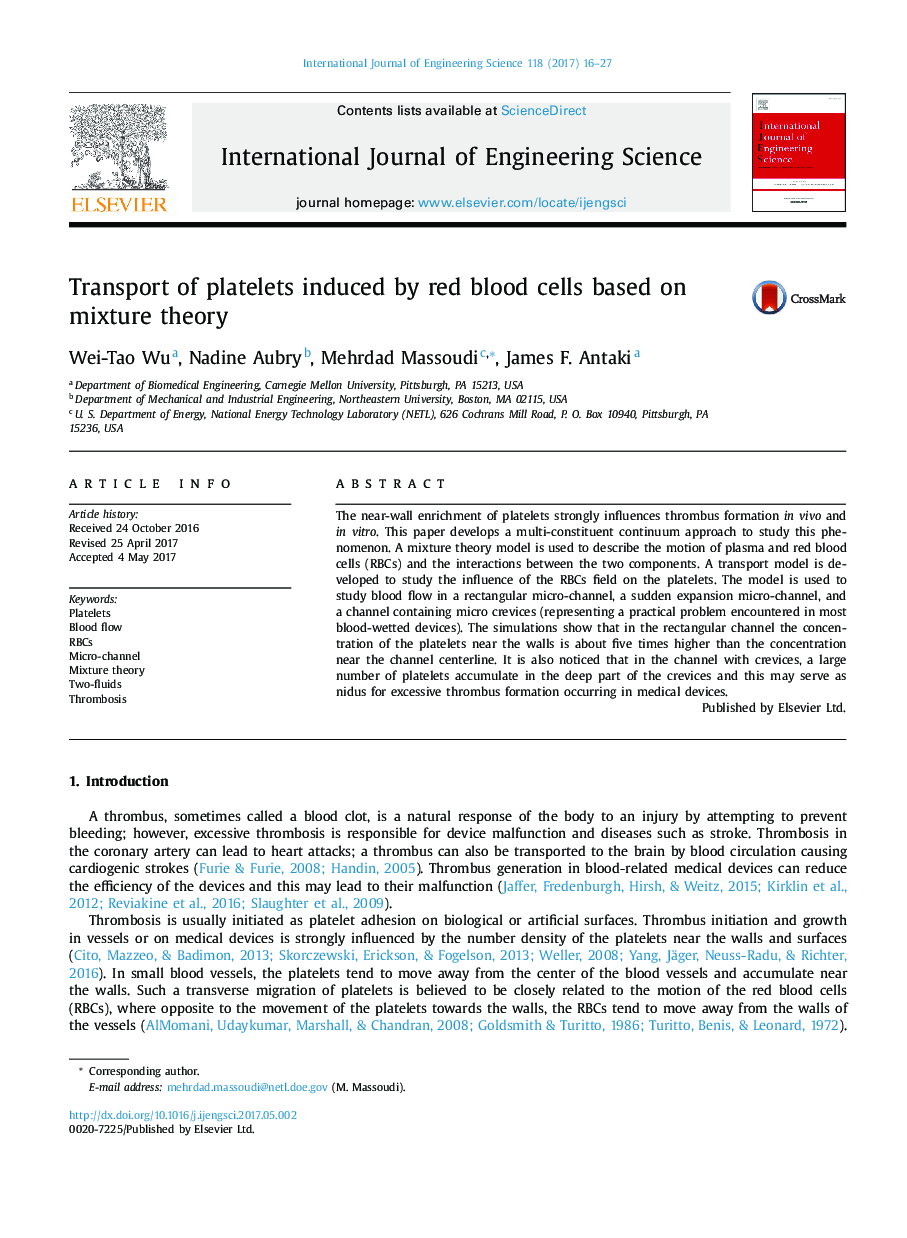| Article ID | Journal | Published Year | Pages | File Type |
|---|---|---|---|---|
| 5022709 | International Journal of Engineering Science | 2017 | 12 Pages |
Abstract
The near-wall enrichment of platelets strongly influences thrombus formation in vivo and in vitro. This paper develops a multi-constituent continuum approach to study this phenomenon. A mixture theory model is used to describe the motion of plasma and red blood cells (RBCs) and the interactions between the two components. A transport model is developed to study the influence of the RBCs field on the platelets. The model is used to study blood flow in a rectangular micro-channel, a sudden expansion micro-channel, and a channel containing micro crevices (representing a practical problem encountered in most blood-wetted devices). The simulations show that in the rectangular channel the concentration of the platelets near the walls is about five times higher than the concentration near the channel centerline. It is also noticed that in the channel with crevices, a large number of platelets accumulate in the deep part of the crevices and this may serve as nidus for excessive thrombus formation occurring in medical devices.
Related Topics
Physical Sciences and Engineering
Engineering
Engineering (General)
Authors
Wu Wei-Tao, Nadine Aubry, Mehrdad Massoudi, James F. Antaki,
